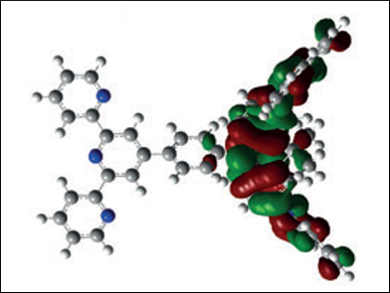There has been a lot of research focused on luminescent materials. However, there still is a need for more efficient luminescent materials for specific applications. Many approaches adapt well-known materials as building blocks for improving device applications. Terpyridine is a good example of such a building block: First synthesized in 1932, it has since been used in versatile roles, e.g., as a tridentate metal ligand, in fluorescent probes and sensor technology, as well as in supramolecular materials.
Junji Kido, Hisahiro Sasabe, and colleagues, Yamagata University, Japan, have developed terpyridine-derived luminescent materials which display strong thermally activated delayed fluorescence (TADF). This process can allow materials to be used in organic light emitting devices (OLEDs) with increased efficiencies. For TADF to occur, the materials have to have a sufficiently small energy difference between the singlet and triplet excited states, which requires careful choices of the donor (D) and acceptor (A) moieties. The researchers used density functional theory (DFT) calculations to find the most suitable D–A combinations.
In host matrix films (10 wt% in a bis[2-(diphenylphosphino)phenyl] ether oxide matrix), the synthesized materials have quantum yields up to 62 %. The materials were tested in OLED devices and showed low turn-on voltages of 3.01 V at 1 cdm–2 as well as low efficiency roll-off. They have external quantum efficiencies of 20–25 %, and low operating voltages of 3.40 V even for a brightness of 1000 cdm–2. These values are comparable to those of state-of-the-art phosphorescent materials.
- Highly Luminescent π-Conjugated Terpyridine Derivatives Exhibiting Thermally Activated Delayed Fluorescence,
Hisahiro Sasabe, Yuya Hayasaka, Ryutaro Komatsu, Kohei Nakao, Junji Kido,
Chem. Eur. J. 2016.
DOI: 10.1002/chem.201604303




